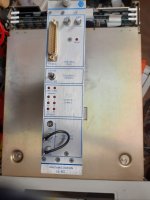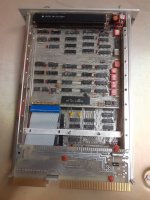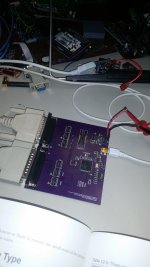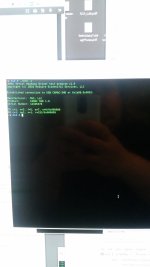Hi All,
I plan to bring alive a Interface standards IS-11 PDP-11 qbus to Camac adapter inside a LeCroy desktop Crate and have the following questions:
1. Does anyone have manuals or a working system? I got this adapter 25 jears ago together with a couple of 5 1/4 drives. I haven't found yet any config information on the net.
2. Is that right that the 2 Slots inside the adapter are qbus slots that have to carry a CPU with on-board ODT (e.g. a M8186) and a memory card (e.g. 8044)?
last time ago there was an auction for one of this adapter carrying an M8044.
3. Are there additional camac cards required for a working minimal system?
Yours Sincerly,
Braids.
I plan to bring alive a Interface standards IS-11 PDP-11 qbus to Camac adapter inside a LeCroy desktop Crate and have the following questions:
1. Does anyone have manuals or a working system? I got this adapter 25 jears ago together with a couple of 5 1/4 drives. I haven't found yet any config information on the net.
2. Is that right that the 2 Slots inside the adapter are qbus slots that have to carry a CPU with on-board ODT (e.g. a M8186) and a memory card (e.g. 8044)?
last time ago there was an auction for one of this adapter carrying an M8044.
3. Are there additional camac cards required for a working minimal system?
Yours Sincerly,
Braids.




